In my new English-Spanish video, landscaper José Arias of Borrego Springs, CA explains and shows how to manage a beautiful succulent with toxic, milky sap: Euphorbia tirucalli ‘Sticks on Fire’.
En inglés y español, el paisajista José Arias de Borrego Springs, CA explica y muestra cómo podar y manipular árbol de los dedos, una hermosa suculenta que tiene una savia lechosa y tóxica.
About Euphorbia tirucalli 'Sticks on Fire'
This South African succulent, sometimes called firesticks or pencil tree, originated as a sport (offshoot) of larger, solid-green Euphorbia tirucalli. Both are easy to grow in coastal areas of Southern California and Mexico where temperatures stay above 32 degrees. Over time plants get large---up to 15 feet tall.
Be careful pruning it
Like all euphorbias, 'Sticks on Fire' has a white, milky sap. The liquid can cause irritation of the skin and is especially painful and dangerous to the eyes. In the video, Sr. Arias tells how not knowing this sent him to the hospital. Obviously, you shouldn't plant it or any other euphorbia where children and pets play.
Don’t be afraid of it
Follow José's simple tips on how to trim and manage Euphorbia tirucalli (arbol de los dedos), and it will be a gorgeous enhancement to your landscape for years to come.
What do do with cuttings
Carry them to the green waste bin by the dry branches, with raw ends facing away from you. Or use them to start new plants: Simply stick upright in coarse, friable soil that drains well.
Prune in summer or fall
Best time to trim euphorbias is during the dry season. After winter and spring rains, the plants may become engorged with sap that may squirt when limbs are cut.
Plan for drips
In my video, cuttings land on a dirt bank, so dripping sap doesn't matter. When I prune mine, I set cuttings on newspaper to catch milky puddles. Then I wrap the newspaper around the cuttings when I transport them. The latex sap doesn't damage hardscape, but it's sticky, and I don't want to track it into my house.
Essential items
Note that when pruning Euphorbia tirucalli, Sr. Arias wears gloves, long sleeves and trousers (so sap doesn't get on his skin), plus sunglasses. Instead of short pruners, he uses long-handled "bypass loppers."
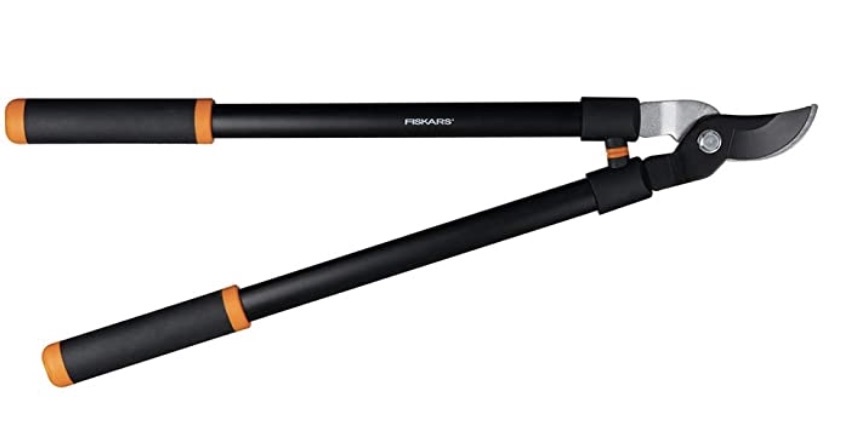
Long-handled pruners (bypass loppers) let you trim euphorbia branches with precision while staying well away from dripping cuts. They're useful for many other pruning tasks as well.
Why grow 'Sticks on Fire'?
It's colorful and practical. As far as I'm concerned, it's main downside is that it's frost-tender. Apart from occasional trimming (every three or four years), it needs no care at all. Here are seven examples.
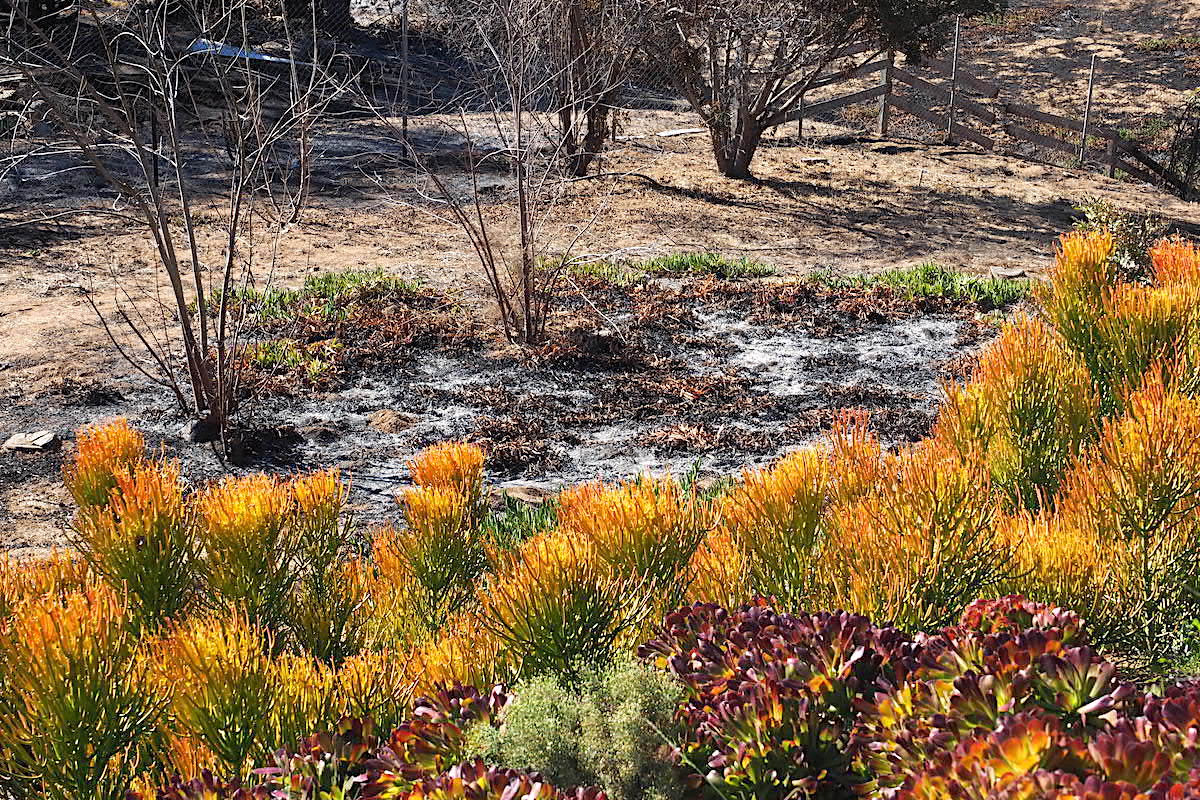
Its liquid sap makes 'Sticks on Fire' an effective firebreak (shown here in Dr. Camille Newton's garden).
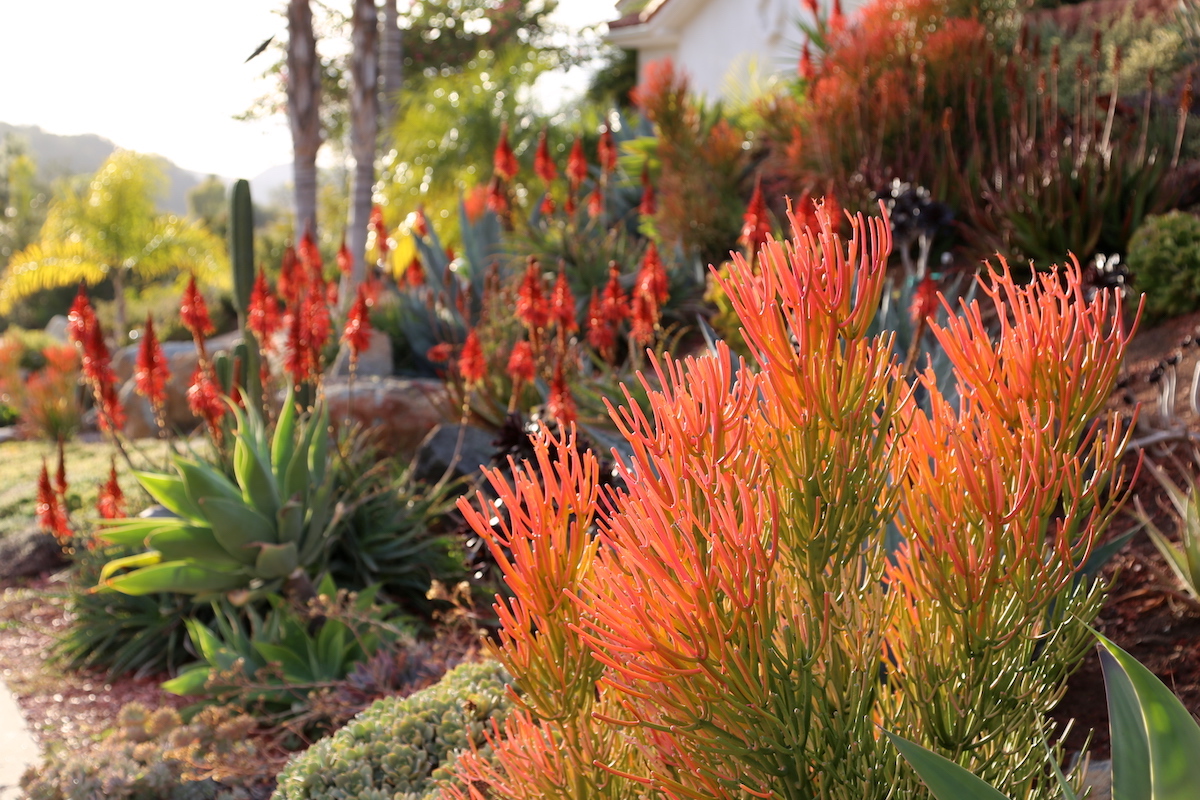
It repeats the red of aloes in midwinter
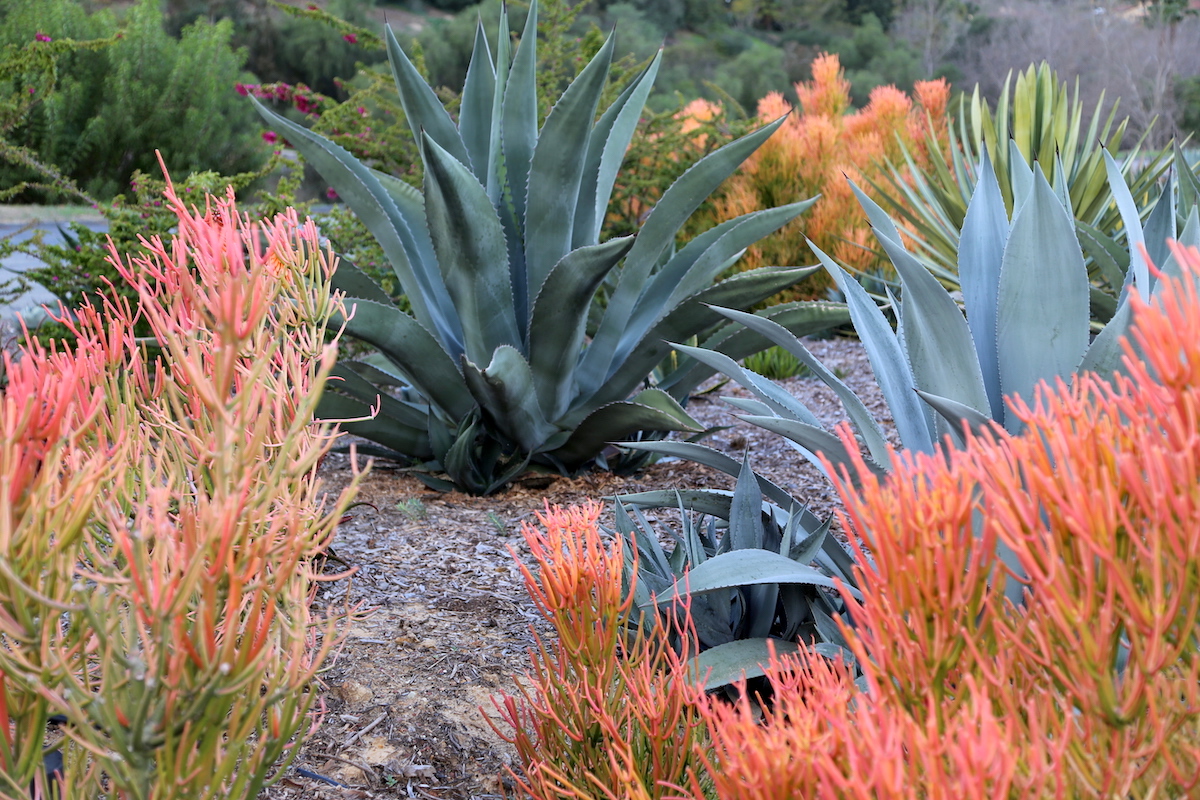
'Sticks on Fire' needs no more water nor care than large agaves, and contrasts beautifully with them in color and texture.
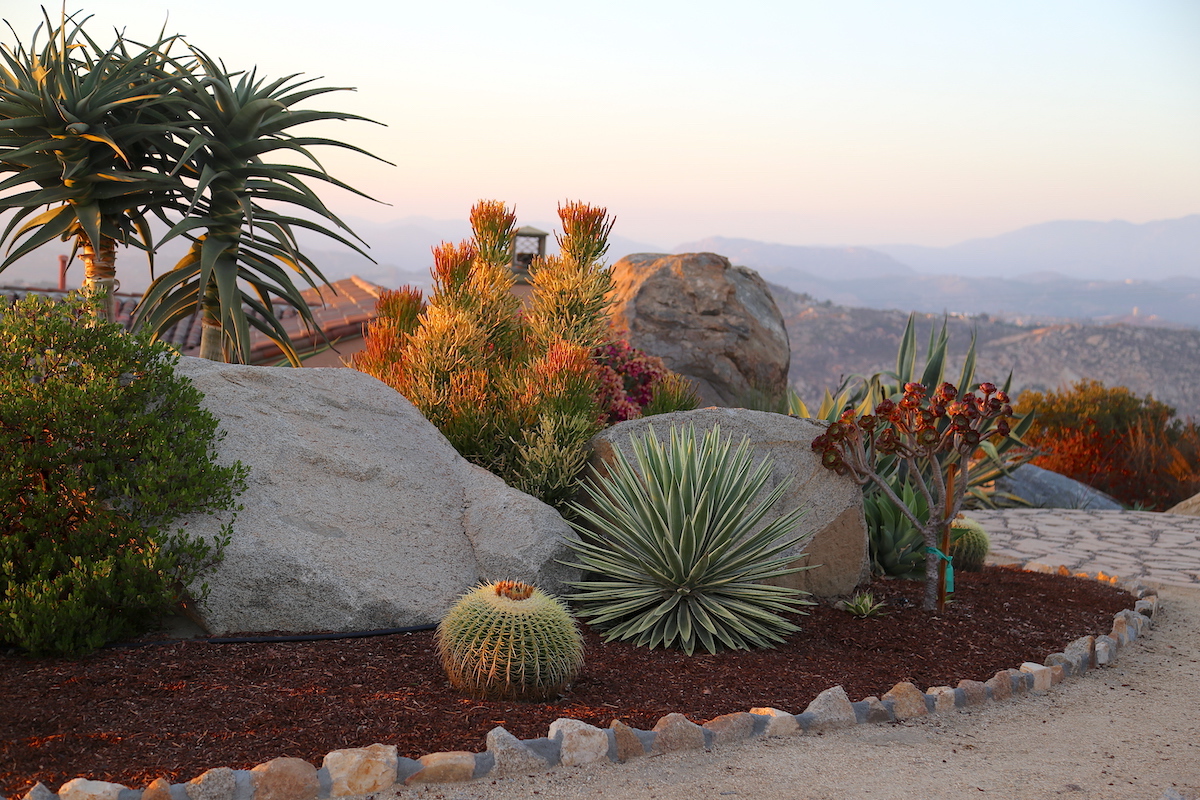
It makes a statement in any landscape, especially amid large boulders.
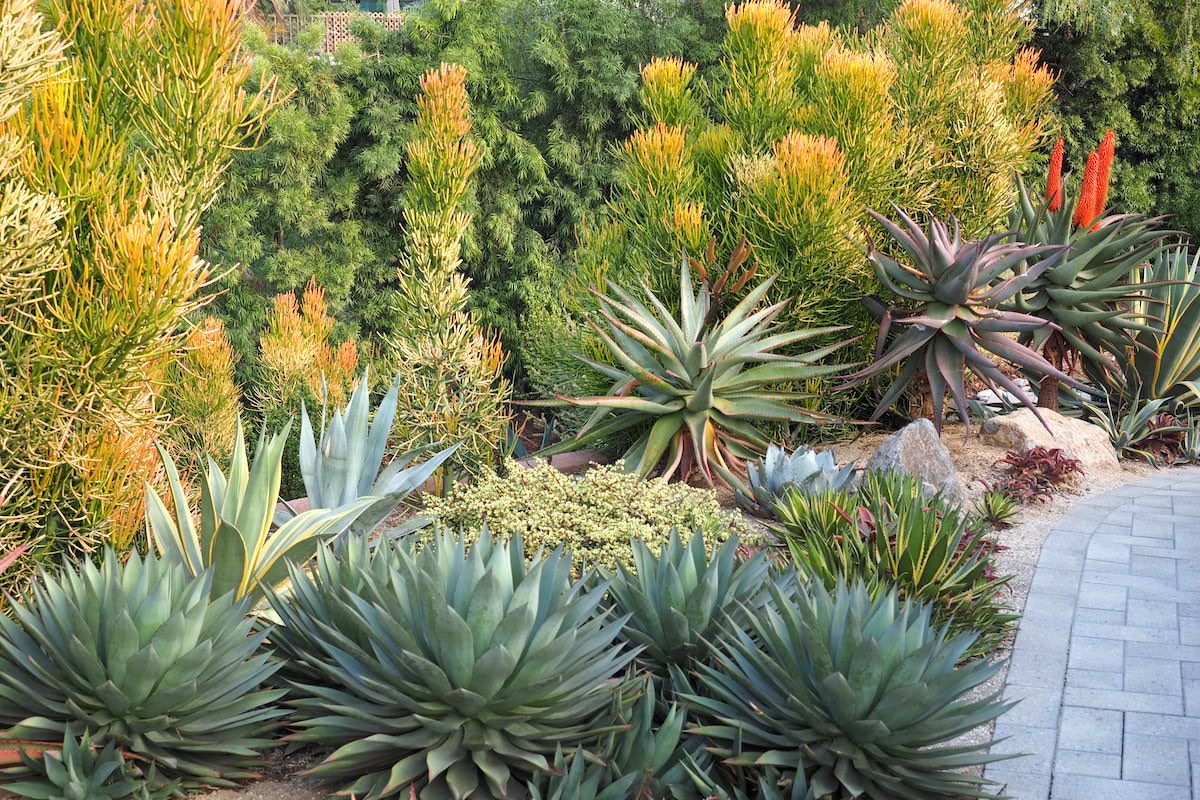
'Sticks on Fire' makes an easy-care hedge and backdrop plant.

It perfectly frames other large succulents.
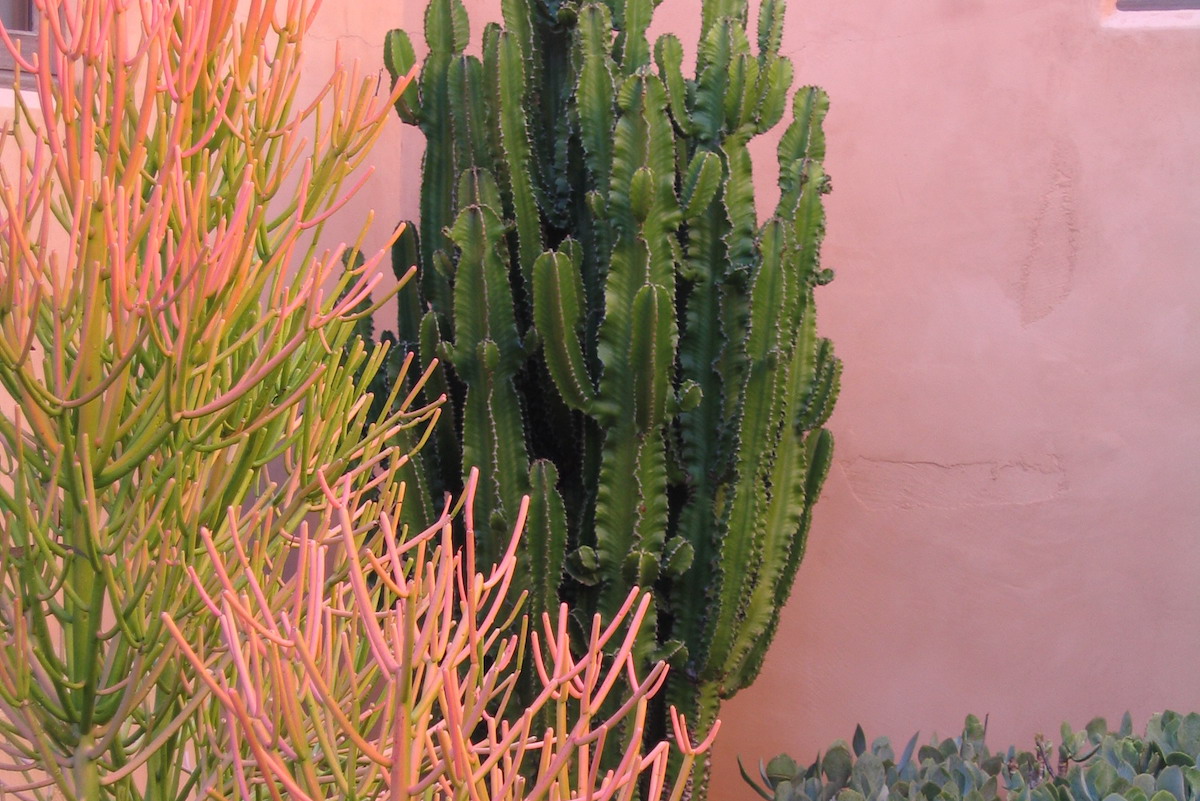
It offers design repetitions and contrasts not possible with other dry-garden plants.
Related Info on this Site
Succulent Euphorbias: Photos, IDs, Garden Uses, Cautions
Euphorbia Uses, Photos and Cautions Native primarily to South Africa, succulent euphorbias thrive outdoors in mild, arid maritime climates. They’re wonderfully sculptural and collectible, but do be careful when handling. See All Succulent Types Aeonium Agaves Aloes Cactus Crassula Echeveria Euphorbias Ice Plants Kalanchoe Portulacaria Senecio About SUCCULENT EUPHORBIAS Euphorbia is a huge genus composed of…
How Succulents Protected a Home from Wildfire
Such reports aren’t unprecedented. Suzy Schaefer’s succulent garden in Rancho Santa Fe “saved our home,” she told me (and national media) after the Witch Creek Fire. I had heard of others as well. Even so, I was skeptical. True, succulents tend to cook rather than burn and don’t transmit flames. But wildfire is so intense it melts metal…
The post How to Prune and Handle Euphorbia tirucalli ‘Sticks on Fire’ appeared first on Debra Lee Baldwin. Copyright © Debra Lee Baldwin.
from Debra Lee Baldwin https://ift.tt/3BLjcZB
via IFTTT


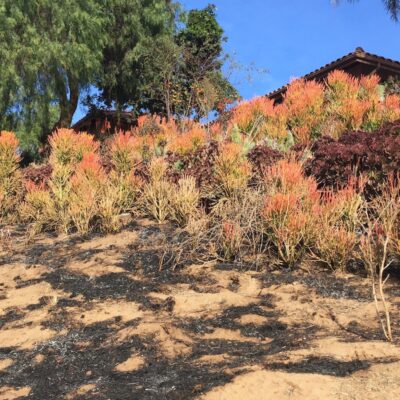
No hay comentarios:
Publicar un comentario